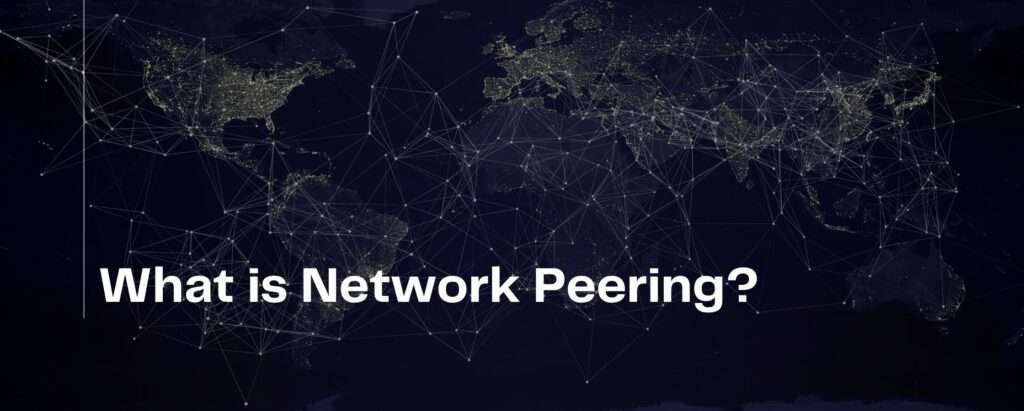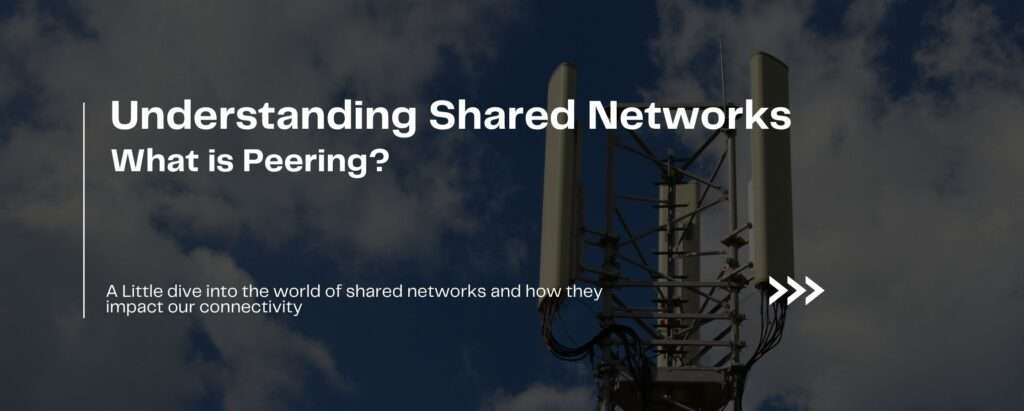Let’s be honest, finding the “best cell phone service” isn’t always a walk in the park. Navigating the maze of providers, plans, and jargon can feel like trying to decipher ancient hieroglyphics. But beneath the surface of flashy marketing lies the fundamental infrastructure that makes it all possible: peering and shared networks. Understanding these concepts is key to appreciating the complexities – and potential pitfalls – of the telecom world. This isn’t about fluffy marketing promises; this is about the nuts and bolts of reliable communication.
What is Network Peering?

Imagine two massive highway systems, each serving a different region. Network peering is like building a direct on-ramp connecting these highways. Instead of each system forcing traffic through a congested central interchange (a costly and inefficient process), they agree to directly exchange traffic with each other. This results in faster speeds, lower latency (that lag you hate), and reduced costs for both networks.
For telecom providers, peering agreements are crucial. They allow different networks (like Verizon and AT&T, for example) to seamlessly exchange data, ensuring that a call from a Verizon customer to an AT&T customer doesn’t suffer from excessive delays or dropped calls. Think of it as the polite neighborly agreement that keeps your communication smooth.
5 Key Advantages of Network Peering
- Dramatically Reduced Latency Direct connections eliminate multiple routing hops, cutting response times from milliseconds to microseconds. This means smoother video calls, faster web browsing, and real-time applications that actually work in real-time.
- Significant Cost Savings By bypassing expensive transit providers, networks can reduce bandwidth costs by 30-70%. These savings often get passed down to consumers through more competitive pricing.
- Enhanced Network Reliability: Multiple peering connections create redundant pathways. If one route fails, traffic automatically reroutes through alternative peer connections, ensuring consistent service availability.
- Improved User Experience Faster load times, clearer voice calls, and buffer-free streaming become the norm when data takes the most direct path between networks rather than bouncing through multiple intermediaries.
- Greater Network Control Providers maintain better control over their traffic routing and quality of service, allowing them to prioritize critical communications and optimize performance based on real user needs rather than third-party limitations.
The Role of Shared Networks (and why they’re not always your best bet)
Shared networks, on the other hand, involve multiple providers using the same underlying infrastructure. It’s like multiple carpooling services using the same set of roads. This approach can be cost-effective for smaller providers, allowing them to leverage existing infrastructure without massive capital investments. However, this shared infrastructure comes with caveats.
Capacity Issues: If one provider experiences a surge in traffic, it can impact the performance of others on the same network. Think of rush hour on a single highway – everyone’s journey gets slower.
Limited Control: Providers relying on shared networks have less control over network quality and maintenance. They’re reliant on the parent company to address outages or performance issues, which can be frustrating. This lack of autonomy can be a significant point of friction.
Why Wholesale SIP Providers Matter More Than Ever
Wholesale SIP providers are the unsung heroes powering today’s telecommunications. These behind-the-scenes operators supply VoIP infrastructure to smaller telecom companies and businesses, enabling competitive pricing without massive infrastructure investments.
The numbers speak volumes: The global SIP trunking market reached $72.48 billion in 2025 and is projected to hit $39.6 billion by 2030 with a 14.2% growth rate. More importantly, businesses see real savings—up to 40% on local calls and 90% on international calls, with small businesses saving an average of 68% by switching to VoIP.
The democratization effect is undeniable: Wholesale providers level the playing field, allowing smaller companies to compete without prohibitive capital costs. With 90% of IT leaders moving away from on-premise solutions by 2021, wholesale SIP providers have become essential infrastructure partners, not just cost-saving intermediaries.
In an industry worth tens of billions and growing at double-digit rates, wholesale SIP providers are the backbone that makes modern, affordable communication possible for businesses of all sizes.
Our Personal Experience – A Tale to Understand Things From Context
We once worked with a small VoIP provider that relied on a shared network. During peak hours, their service quality plummeted, leading to frustrated customers and lost business. It taught me a valuable lesson: while shared infrastructure can be attractive initially, long-term stability and control often outweigh the initial cost savings.
Having a VoIP provider that can tactfully help you overcome challenges lays the foundation for customer trust and brand identity enhancement.
Making Smart Infrastructure Decisions
The telecommunications landscape isn’t just about choosing the cheapest plan or the flashiest marketing campaign—it’s about understanding the foundation that powers your communication. Whether you’re selecting a cell phone provider or building a business communication system, the infrastructure beneath the surface determines your experience.
Network peering creates the direct highways that keep your calls and data flowing smoothly between different providers. Shared networks offer cost-effective solutions but come with performance trade-offs during peak usage. Wholesale SIP providers bridge the gap, democratizing access to enterprise-grade infrastructure for businesses of all sizes.
The choice isn’t always black and white. The most reliable telecom solutions often combine strategic peering agreements with smart wholesale partnerships, creating redundancy and flexibility that pure shared networks can’t match.
As Bill Gates once said, “Information technology and business are becoming inextricably interwoven. I don’t think anybody can talk meaningfully about one without talking about the other.” The next time you experience crystal-clear call quality or lightning-fast data speeds, remember—it’s not magic, it’s smart infrastructure design working behind the scenes.
Key Takeaways
For Consumers:
- Look beyond marketing promises and ask about network infrastructure
- Understand that cheaper shared network plans may mean slower speeds during peak hours
- Research whether your provider has direct peering agreements with major networks
For Businesses:
- Wholesale SIP providers offer enterprise-grade infrastructure without massive capital investment
- Shared networks can work for startups, but plan for infrastructure upgrades as you scale
- Direct peering agreements become crucial as your communication needs grow
For Everyone:
- Infrastructure quality directly impacts your daily communication experience
- The $72.48 billion wholesale SIP market exists because businesses need reliable, scalable solutions
- Understanding these fundamentals helps you make informed decisions rather than falling for marketing hype
The next time you experience crystal-clear call quality or lightning-fast data speeds, remember—it’s not magic, it’s smart infrastructure design working behind the scenes.

